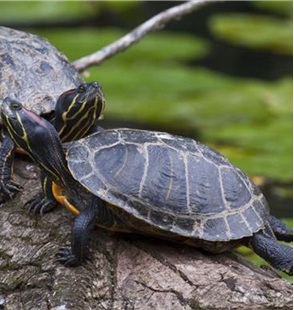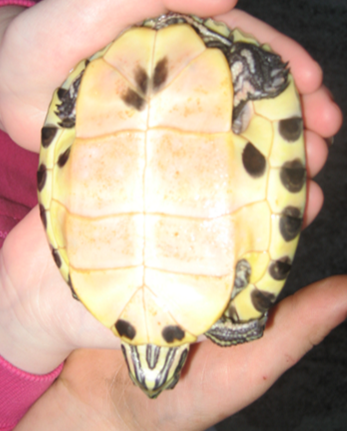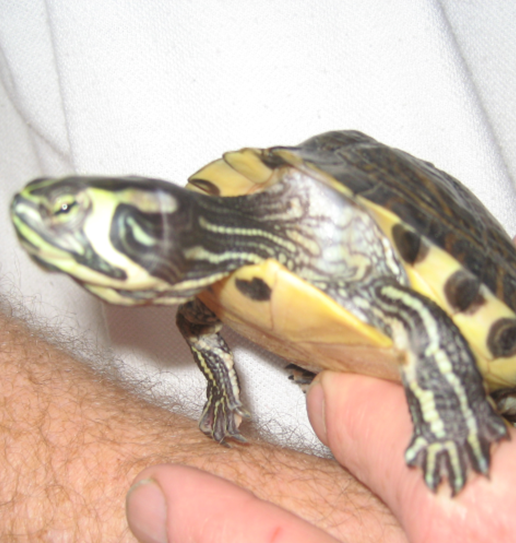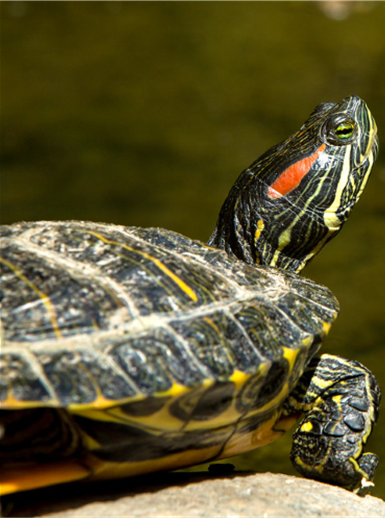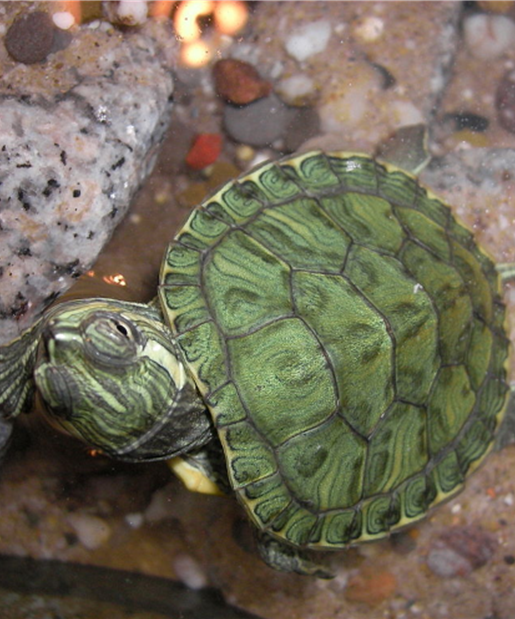Issued by: The National Parks and Wildlife Service (NPWS)
Reason for issue: to notify the prominence of this invasive species throughout the country, as an Invasive Species of Union Concern.
What was seen and when: Pond Sliders were first reported in Ireland in 2003. More recently, they were identified in The Lough, Cork City in March 2021 and the species has been reported 8 times since then. Their first record of their occurrence in the National Botanic Gardens, Dublin was submitted in May 2020 and in Phoenix Park in June 2020. There have been many other sightings since 2020, notably in Skerries, Leixlip and Kilminchy.
Invasive status: All three subspecies of Pond Slider (Yellow-Bellied Slider, Red-Eared Slider and Cumberland Slider) are regulated invasive species of Union concern under the European Regulation on the prevention and management of the introduction and spread of invasive alien species [1143/2014]. Additionally, the importation of Red-Eared Sliders is prohibited under the Wildlife Trade Regulation (Council Regulation 338/97) of the European Union. Red-Eared and Yellow-Bellied Sliders have been evaluated as having a risk of medium impact while Cumberland Sliders have a risk of high impact.
Summary of potential impacts:
- The Pond Slider can persist locally, competing with native species for food and resources.
- It can impact on some bird species by using nests as basking sites.
- Risk of disease and parasite transmission to native species and humans. E.g., considered a potential vector of salmonella.
- As the species matures it become more omnivorous, they predominately eat plants but also have the ability to predate on young birds and fish. This could impact upon Ireland’s native biodiversity.

Identification features:
Red-Eared Slider
- Dark green, some yellow colouring
- Distinctive red markings behind the eyes
- Can grow up to 30cm in length
Yellow-Bellied Slider
- Dark brown with broad vertical bands on their side
- Yellow underside
- Narrow yellow stripes on the front of their legs
- Can grow up to 30cm in length
- Large yellow blotch behind their eye (most prominent in females and juveniles)
Cumberland Slider
- Green shell with black and yellow spots
- Can grow up to 21cm in length
Introduction status: All sub-species have been found in the wild in Ireland however the Red-Eared and Yellow-Bellied Sliders are more commonly recorded than the Cumberland Slider.
Pathway of introduction:
Prior to the introduction of the Wildlife Trade Regulation, Council Regulation 338/97 of the European Union Red-eared sliders were traded freely in pet shops, with over 50 million being imported into Europe for this purpose. After the prohibition of red-eared slider trade, Yellow-bellied and Cumberland sliders were traded alternatively until the introduction of the EU Invasive Species Regulation (1143/2014). All three subspecies were prohibited from trade in Europe.
Vector of spread:
The main vector of spread is release to the wild. Often the full adult size and life-span of the species is unknown to pet owners initially. Pond sliders are generally sold as hatchlings, they can grow to 30cm and live for up of 50 years. When the pets can no longer be cared for they are released into the wild. They cannot reproduce in Ireland’s climate.
Circumstances of the discovery:
Pond Sliders were reported to be present in the Lough, Cork City and the National Botanic Gardens, Dublin via the National Biodiversity Data Centre reporting function.
Management actions taken to date for this sighting:
- The Office of Public Works and Cork City Council were issued Early Detection Notifications regarding the sighting of the species, alerting them of their duty to apply Rapid Eradication Measures in line with Article 17 of the EU IAS Regulation (1143/2014).
- The National Parks and Wildlife Service are planning to work on a national eradication plan in association with the National Biodiversity Data Centre and the Herpetological Society of Ireland.
- The National Biodiversity Data Centre maintains an online reporting function: https://records.biodiversityireland.ie/record/invasives
Where might I see it?
Found in slow flowing freshwater habitats with soft bottoms and an abundance of aquatic vegetation.
What should I do?
- Report any suspected sightings with a photograph if possible via this online form https://records.biodiversityireland.ie or through the Biodiversity Data Capture app.
- Please circulate the one page species alert poster or this web page.
Additional Resources:
- National Biodiversity Data Centre species account for Yellow-Bellied Slider, Red-Eared Slider and Cumberland Slider.
- Invasive Species Northern Ireland page for Pond Slider.
- CABI ISC datasheet on Red-Eared Slider.
For queries relating to this discovery of Pond sliders in Ireland:
The National Biodiversity Data Centre Invasive Species Team
For queries or information relating to invasive alien species:
email the NPWS [email protected] and see National Parks & Wildlife Service (npws.ie) or email [email protected]


